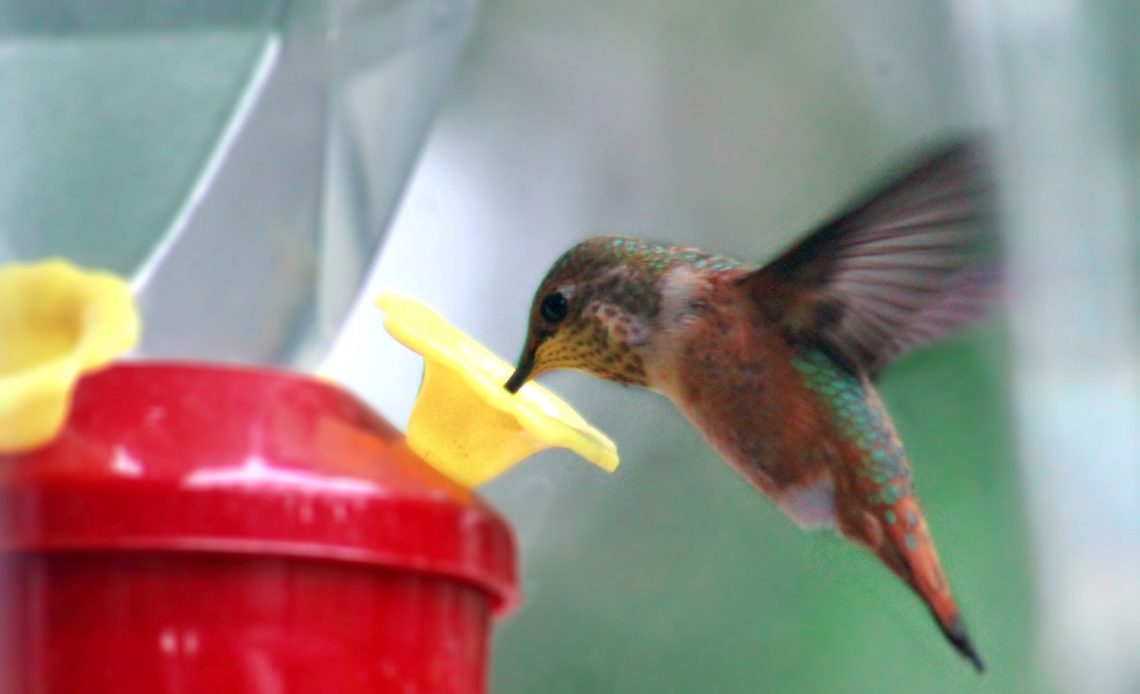

We’re here to help! Wild Yards is a completely free website that is 100% dedicated to helping you create a wildlife-friendly, sustainable yard. Read more
WildYards is reader-supported. When you buy a product through a link on our site, we may earn a comission. Every product is independently selected by our (obsessive) editors and our reviews are unbiased and objective. Read more about our mission or our privacy policy.
Tiny and lightning fast, hummingbirds have incredibly high metabolisms, meaning they must eat every 10 to 15 minutes to keep their strength up. While hummingbirds prey on small bugs, like flies and aphids, to meet their protein needs, they require a tremendous amount of nectar to stay healthy. When flowers are in low supply, nectar also runs short. You can help your local hummingbirds by making homemade nectar for them. If you don’t have the time to boil water, our DIY hummingbird food recipe without boiling water can be made in a jiffy.
You don’t have to boil water to make hummingbird food! Simply mix 1 part white sugar with 4 parts water and stir. Once the sugar is dissolved, your DIY hummingbird food is ready to be poured into your feeders for local hummingbirds to enjoy.
Why do most hummingbird recipes say to boil the water?
Most hummingbird food recipes say to boil the water first to kill off any bacteria that may be contaminating it. Hummingbirds are small and delicate. Because they require near-constant food, if a bird becomes sick, it won’t be able to meet its caloric needs and may die as a result. So using clean water in your hummingbird food recipes is essential to the bird’s health. However, drinking water that’s human-safe is also hummingbird-safe, which makes boiling an unnecessary step.
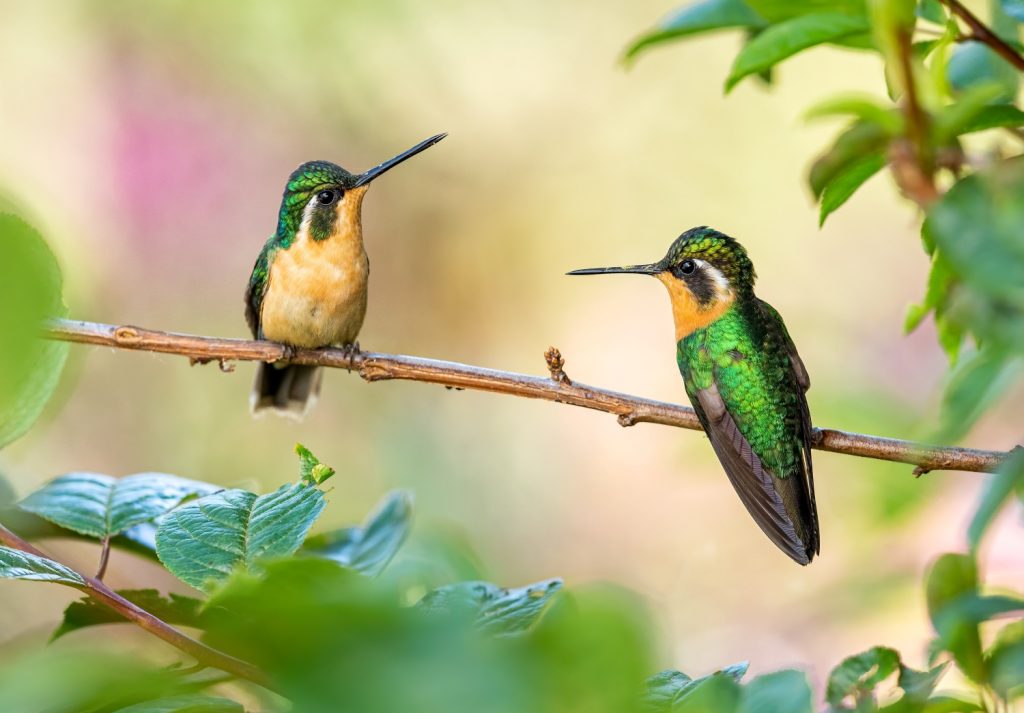
Do you have to boil water to make hummingbird food?
Everybody wants to support their local flora and fauna, and providing hummingbirds with homemade nectar is a great way to do just that. But, let’s face it, making hummingbird food with boiling water takes so much time. More time than some people have to spare. So is this step necessary, or can it be skipped altogether?
As long as you use clean water that’s safe for humans to drink, then there is no need to boil it to make food for hummingbirds. If you have city water, you may want to install a whole-house water filtration system or invest in a much more low-maintenance option, such as a water filter pitcher. That way, you can be certain you’re giving your hummingbirds the highest quality water possible. You can also use store-bought bottled water to make your hummingbird nectar if you prefer.
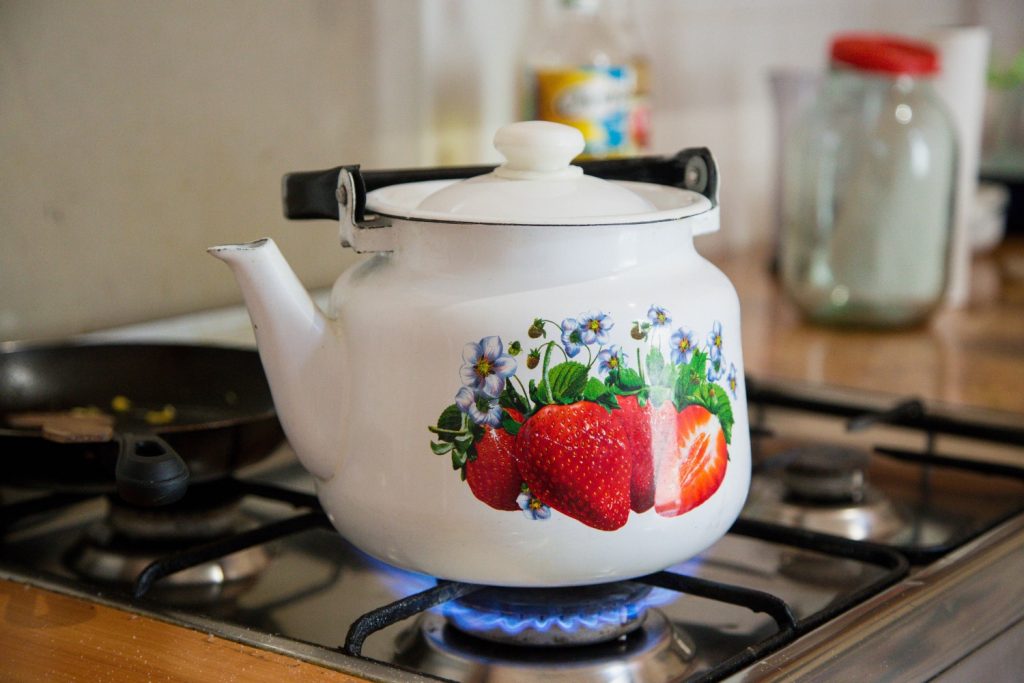
DIY hummingbird food recipe without boiling water
Our DIY hummingbird food recipe does not require you to boil water, which saves you time in the kitchen. The process couldn’t be simpler. Here’s what you’ll need:
- 1 cup of white granulated sugar
- 4 cups of water
- A pitcher that’s 1 quart or larger in size
- A spoon to stir with
Measure out a cup of white sugar and dump it into the pitcher. Then, pour the water over it, stirring as you go. Keep mixing the solution until the sugar dissolves completely. It shouldn’t take you more than a few minutes. Once everything is combined, your homemade nectar is ready to be poured into your feeders for your resident hummingbirds to enjoy!
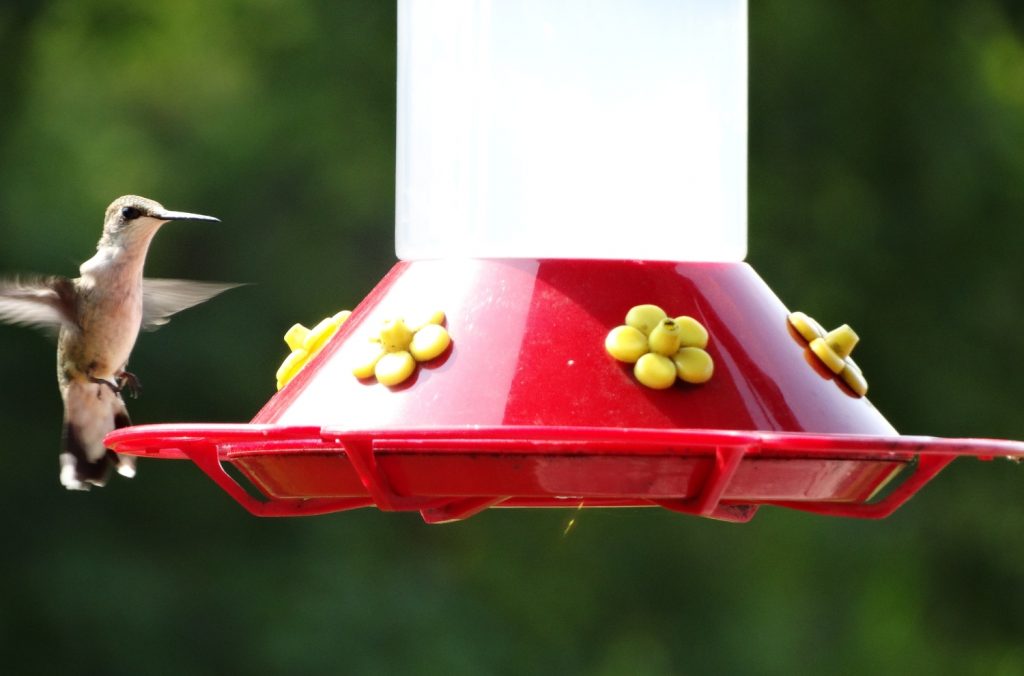
Should you use red dye in your hummingbird food?
Red dye is often added to hummingbird food to catch the attention of hummingbirds passing by. However, if you choose hummingbird feeders that are brightly colored, this shouldn’t be an issue. The hummingbirds will still easily locate clear hummingbird food.
While there are no scientific studies proving that red dye is dangerous for hummingbirds to consume, most bird enthusiasts consider it less-than-healthy. While using red dye isn’t likely to harm your hummingbirds, it doesn’t have any real benefits, either.
If you’re determined to use red dye to make your hummingbird food more noticeable, use tart cherry juice concentrate instead of artificial dyes. This plant-based alternative is thought to be much safer for hummingbirds to consume.
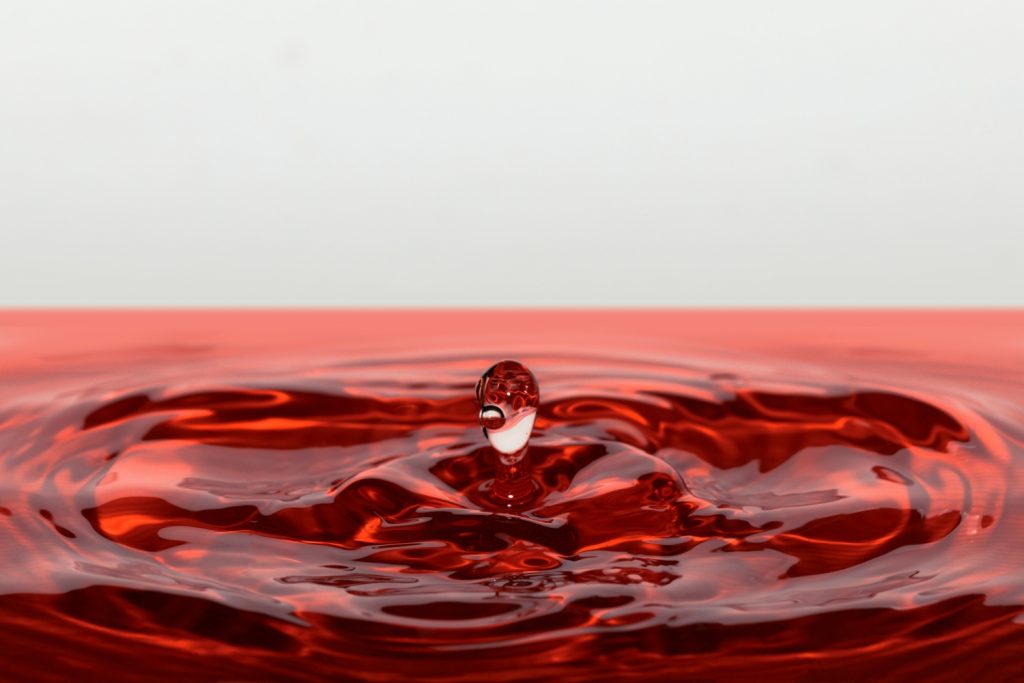
Should you put honey in your homemade hummingbird food?
No! You should never use honey to make hummingbird food. Honey ferments quickly, and fermented honey contaminates hummingbird food with candida, a yeast that can lead to candidiasis, a life-threatening disease that can kill hummingbirds. So never try to substitute honey for white sugar.
It’s also worth noting that hummingbirds have trouble digesting the molasses present in brown sugar, so it, too, should be avoided. Corn syrup, vanilla extract, powdered sugar, and artificial sweeteners, such as erythritol and aspartame, are also a no-no.
When making hummingbird food, whether you boil the water or not, use only white sugar. If you don’t have white sugar on hand, just wait until you get some. Do not try to substitute with other ingredients.
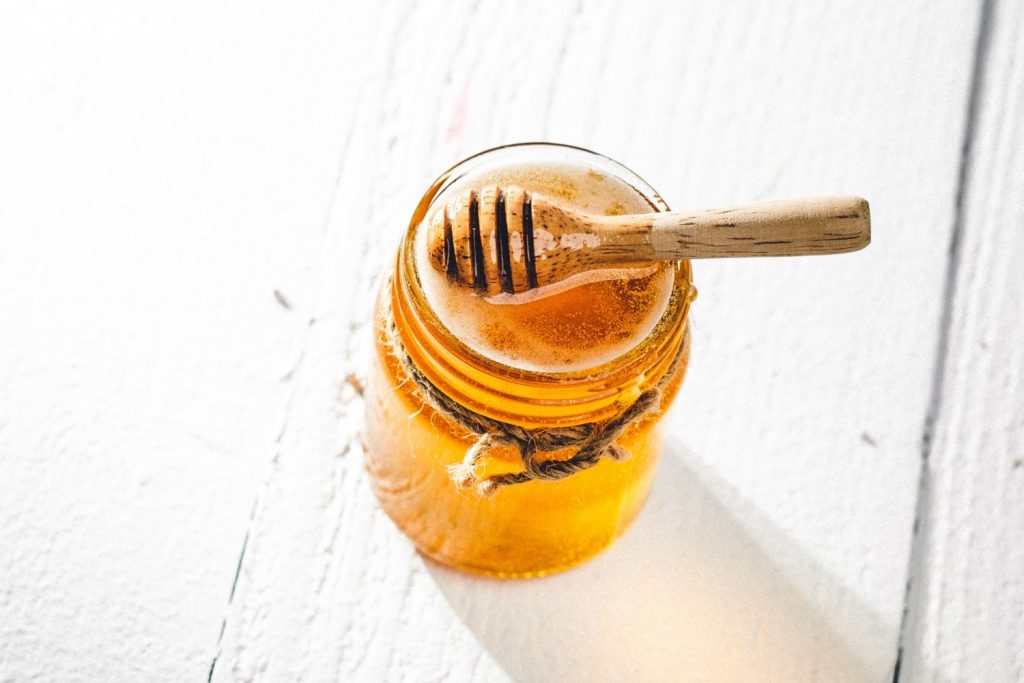
Should you make hummingbird food ahead of time?
It’s best to give hummingbirds fresh food just because the fresher it is, the longer it takes for it to go bad in the feeders. If you need to, however, you can make your hummingbird food 1 to 3 days ahead of time by preparing the mixture and leaving it in the fridge. Just be sure to allow the nectar to warm up to room temperature before using it to fill your hummingbird feeders.
Regardless of when you make your hummingbird food, it’s important to check feeders regularly for signs of spoilage. Sugar water ferments over time, and it can quickly become contaminated. Be sure to change out your hummingbird feeders routinely to keep them fresh.
How often should you change out your hummingbird food?
Hummingbird food doesn’t stay fresh indefinitely. Like anything else, it must be discarded when it goes bad. It’s best to replace hummingbird food every 7 to 10 days when the weather is cool and dry, and every 5 to 7 days when it’s hot and humid.
If you notice a putrid smell coming from the feeders, dump them out, clean them with boiling water to kill any bacteria, and fill them with fresh food. Do this even if you just made the food yesterday. Your hummingbird food should never have a foul odor.
You should also clean out your hummingbird feeders if they become infested with ants or wasps. If you see these bugs floating around the inside of your feeders, or loitering around the outside and preventing local hummingbirds from feeding, take the feeders down and stick them in a bucket of water to kill the live bugs. Once the insects are no longer a threat to you, rinse them out carefully, fill them up with fresh hummingbird food, and put them back out.
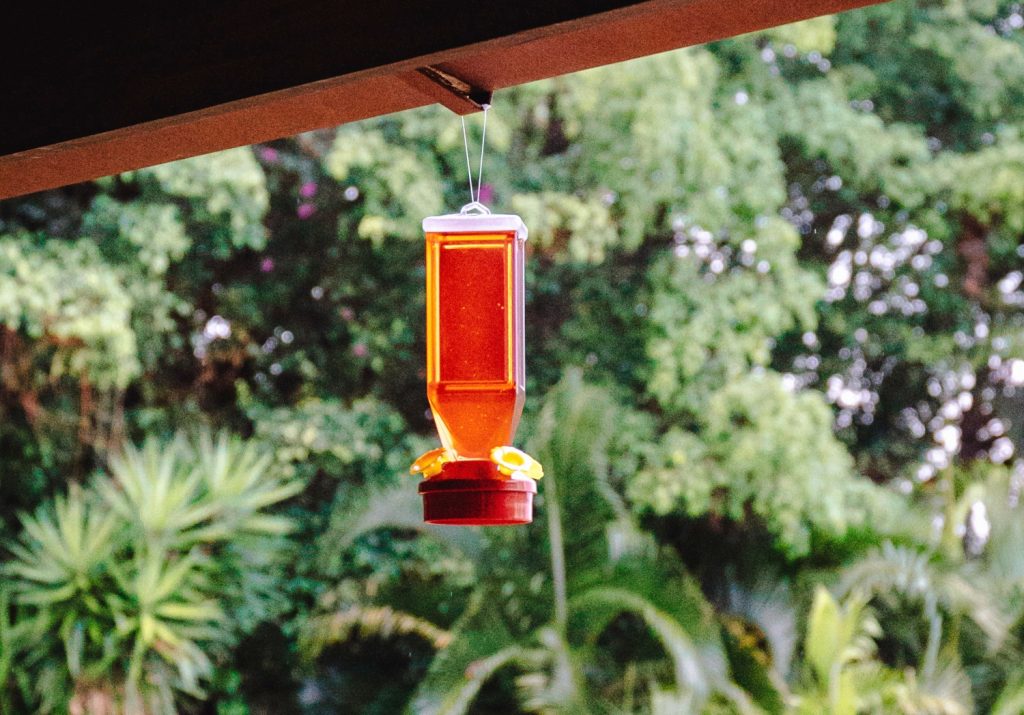
Why should you feed local hummingbirds?
Hummingbirds eat up to 100 times their body weight in food per day. As social birds, they also migrate in flocks, quickly depleting food sources wherever they go. The more hummingbirds you see flying around, the more food they need. Hanging up hummingbird feeders and providing them with homemade nectar gives them a reliable source of food to help them on their journey.
Hummingbirds benefit tremendously from homemade nectar. It helps pad out their diet when flowers are in short supply. Even though hummingbirds can (and do!) eat small insects, they rely on sugary nectar to give them the quick energy they need to survive. Without it, their health quickly suffers.
As long as you make sure your homemade nectar is truly hummingbird-safe and provided you change it out on a regular basis so it doesn’t go bad, feeding hummingbirds is a wonderful way to support their populations and your entire ecosystem.
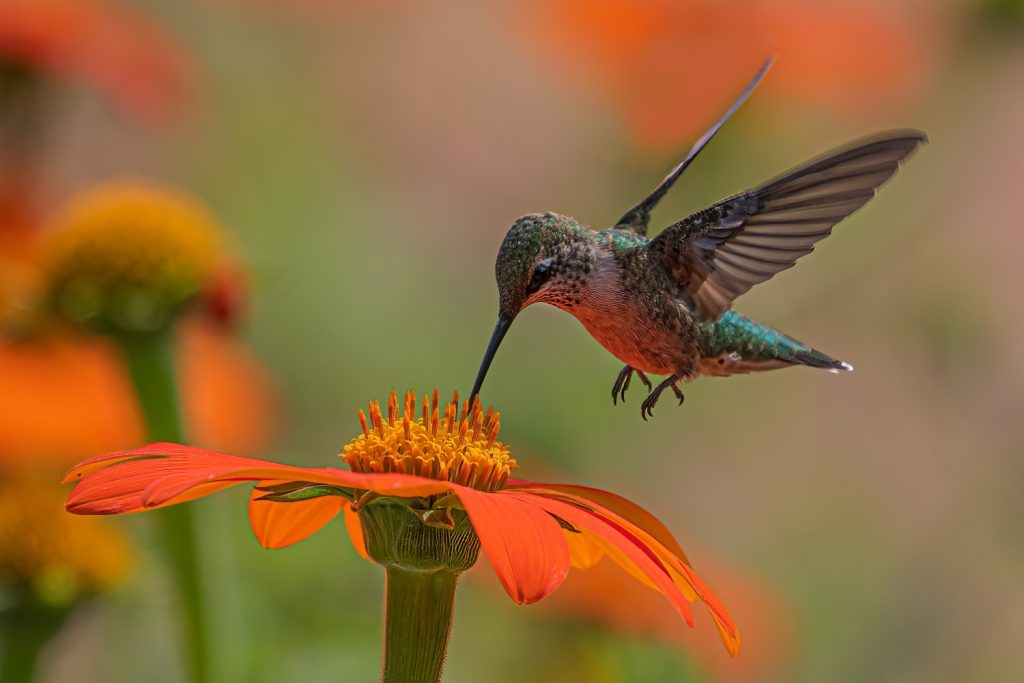
Can you feed hummingbirds fruit?
Sugary fruits are also a wonderful food choice for hummingbirds. Leave a small dish of sugar-sweetened grape jelly out for your flock. Fruit trees, like orange trees, are also known to attract hummingbirds thanks to their strongly fragrant blossoms. Even if you only have a tiny patio garden, you can still grow a small Myer lemon tree to help you attract the attention of passing hummingbirds.
While hummingbirds enjoy a wider variety of foods than you might think, there are still some things that won’t tempt them. Bananas and tomatoes, for instance, are unappealing to hummingbirds, although rabbits, squirrels, and other hungry foragers may enjoy nibbling on these foods if you leave them out in your yard.
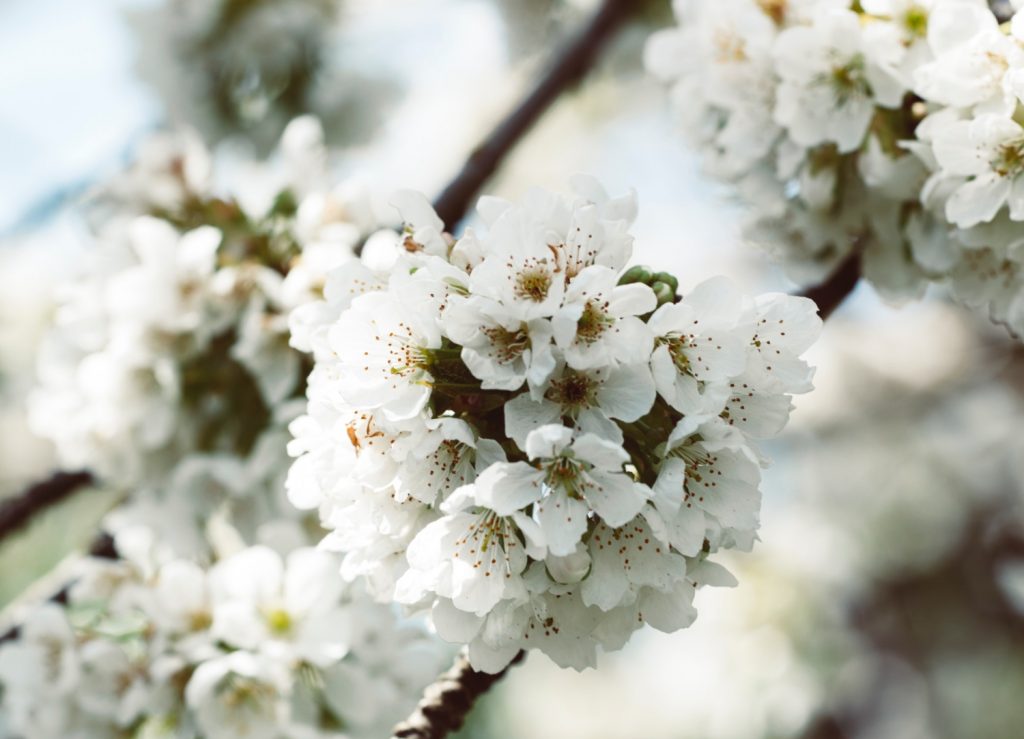
How else can you support local hummingbirds?
Installing one or two hummingbird feeders to help your native hummingbirds supplement their diets is an excellent way to give them some extra TLC. But there are other things that you can do to care for the hummingbirds in your neighborhood. You can start by planting a pollinator garden.
Because hummingbirds rely on nectar to survive, choose nectar-rich flowers, like daylilies, petunias, and begonias to plant in your backyard. Since hummingbirds do not have a great sense of smell, you should choose brightly colored flowers to catch their attention. Red, orange, and yellow flowers are thought to be the most popular among hummingbirds.
With their vibrantly colored plumage, amazing flying abilities, and unexpectedly ferocious natures, hummingbirds are a treat to watch. By using our DIY hummingbird food recipe without boiling water, you’ll spend less time in the kitchen and more time on your porch enjoying watching these fantastic little birds in action.

I live in South West Utah, not far from the Arizona and Nevada borders. I have a mail and female, plus a current year Humming Bird that lives in my yard, year round. I keep fresh nector out, adjacent to my window so I assume there is a minimum of warmth.
We have two to three inches of snow about twice a season, but normally melted by noon.
Is this unusually? Is there a type shelter one can buy or fabricate themselves? Are there supplements you can purchase or laying around the house you can add to the nector? Thanks…
Hi Lonnie! It’s great that you have hummingbirds hanging out in your hard all year long! To help the birds make it through the winter, you can install a heated hummingbird feeder to ensure their food never freezes. You can also purchase nesting boxes to give them a place to get out of the cold. And be sure to check out our post about caring for hummingbirds through the winter. Thank you so much for your question!